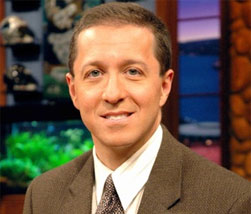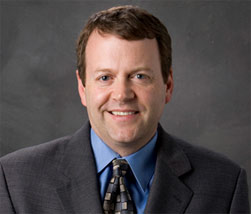Twitter has become a major platform for journalists to break stories, share work and chat with fans, with the most popular national MLB writers claiming several hundred thousand followers. The most-followed MLB writer in THE DAILY’s survey of Twitter accounts is ESPN’s Buster Olney, with nearly 675,000 followers. The list below shows Twitter followers for many of the top national and local MLB writers, as well as other MLB-related feeds. In addition, THE DAILY conducted an e-mail roundtable with three leading national MLB writers -- Olney, FoxSports.com’s Ken Rosenthal and CBSSports.com’s Jon Heyman -- on their Twitter use and how its emergence has changed sports media, covering everything from its weakening of reporting to the “stick to baseball” imperative to Nick Swisher’s surprising charisma.
NOTE: The number of Twitter followers listed for each feed was current as of this morning.
| TWITTER FOLLOWERS AMONG SELECT
MLB WRITERS, MLB-THEMED FEEDS |
| WRITER/FEED | SITE/PUBLICATION | FOLLOWERS |
| Buster Olney | ESPN | 674,347 |
| Ken Rosenthal | FoxSports.com | 337,395 |
| Peter Gammons | MLB Network | 295,411 |
| MLB Trade Rumors | MLBtraderumors.com | 259,079 |
| Jayson Stark | ESPN.com | 250,294 |
| Jon Heyman | CBSSports.com | 216,479 |
| Enrique Rojas | ESPNDeportes.com | 99,721 |
| Jerry Crasnick | ESPN | 96,885 |
| Jon Paul Morosi | FoxSports.com | 92,548 |
| Baseball America | Baseballamerica.com | 89,906 |
| Jeff Passan | Yahoo Sports | 58,279 |
| Joel Sherman | NY Post | 55,187 |
| Pedro Gomez | ESPN | 54,634 |
| Tim Brown | Yahoo Sports | 51,745 |
| Danny Knobler | CBSSports.com | 47,245 |
| Rob Neyer | SB Nation | 45,304 |
| Jonah Keri | Grantland.com | 45,182 |
| Tyler Kepner | N.Y. Times | 44,103 |
| RotoWorld Baseball | Rotoworld.com | 43,978 |
| FanGraphs | Fangraphs.com | 37,862 |
| Baseball Prospectus | Baseballprospectus.com | 33,573 |
| Bob Klapisch | Bergen Record | 30,593 |
| Ken Davidoff | NY Post | 28,448 |
| Barry Bloom | MLB.com | 22,643 |
| Paul Hoynes | Cleveland Plain Dealer | 21,220 |
| | | |
Q: When did you first get on Twitter, and when did you become serious about using it for the MLB beat? Was there a particular situation or story that made you aware of the possibilities of the medium?
Heyman: I got on Twitter in April of ‘09. Anything that has to do with electronics, a computer or something from after ‘68 I try to avoid for as long as possible. My wife made me do it. She was following Shaq and thought (at that time) he was hilarious. So I started looking at it, and I think I saw a tweet from a TV anchor, and he tweeted something like “I had a bagel for breakfast.’’ I thought to myself, “I have bagels. I could do that.” So I gave it a shot. Later, I saw it’s a great way to get news and thoughts out to your readers instantly. So my wife was right, as usual.
Olney:
The first time I saw it, I thought it could be a great way to convey information to sports fans. When I grew up in central Vermont, we had no television and no daily paper, and had one daily source of information for sports -- WDEV radio had a 60-second sports report at 7:15 each morning. I would’ve loved something like Twitter.
Rosenthal: I’ve been on Twitter since November ‘09. Some people at MLBTradeRumors.com, which is widely read by baseball fans and industry types, basically told me that to get credit for breaking news, it would have to come through Twitter.
 |
Heyman focuses on breaking stories through
Twitter, but seasons his feed with humor |
Q: How has Twitter changed the way you report stories, and what is the upside and the downside of using social media for writers?
Heyman: Well, if it’s a reasonably decent story but something short of the biggest story ever, I often tweet the info about the same time I send it to the office. I am still waiting for the biggest story ever, but if that happens, I am supposed to make sure the office knows about it first. But with your normal story, by tweeting it quickly CBS still gets the credit since my Twitter handle is @JonHeymanCBS. There’s a competition to be first and Twitter's obviously a 24-hour thing, but you still need to check your sources and be right. There have been a few folks who open fake accounts, pretending to be journalists, and make stuff up. Those few people apparently have a lot of time on their hands. Anyway, there doesn’t seem to be as much of that lately as the joke has worn thin. … I used to try to debate with some who are over-the-top nasty, but then realized that if someone’s going to call you an “idiot’’ over a difference of opinion about which double-play combo is better, it probably isn’t worth the time.
Olney:
We still work through our news desk before sending out breaking news on Twitter, so it really hasn’t changed much, other than to make everyone develop a story more quickly. The upside is that sports fans get more information, around the clock. The downside is that the reporting process has been weakened, unquestionably.
Rosenthal:
Absolutely it has changed the way I report stories. I try to be as thorough as I’ve always been, getting multiple sources on every story. But sometimes, that is just not possible if I want to be first. Obviously, this increases the risk, and I have had a couple of misses on Twitter -- misses that probably would not have occurred if I was still working solely for a newspaper. The upside is the immediacy. The downside is sloppiness -- not that the people following me and others seem to care. For most, it’s, “OK, what’s next?”
Q: How do you primarily use Twitter (i.e. as a promotional tool, way to connect with followers, chance to be more informal and have some fun, way to break stories)? How much do you interact with your followers?
Heyman: All of those things. I try to break stories and to promote our stories, first and foremost. But to avoid being dry I occasionally will make a quip or tweet things that aren’t too serious. That also helps followers get to know you (assuming that’s a good thing). I probably used to interact more, which is how I got to 38,000 tweets. I’ve admittedly cut back on interactions, but I try to answer a few tweets a day. Spring training is especially hard to answer too many people because, believe it or not, it’s about the busiest time of the year, especially if you’re in Florida, where much of the time is spent driving. Oftentimes the tweeps are helpful, as they’ve caught mistakes, spelling errors, etc., and that is always appreciated. Once in a while, I’ll give my location and offer an entrée to whoever meets me. This works because it gives people the impression I’m generous. I've had only a handful of folks take me up on it, the most memorable being a kid at Arizona State who was the bat boy of the Arizona Fall League team that had both Angels LF Mike Trout and Nationals CF Bryce Harper on it. Very nice kid. I learned a lot.
Olney: All of the above. I’ll interact with followers pretty much every day, usually early in the morning. I’ll send out news and information.
Rosenthal: I use it mostly to break news, promote links to my stories and columns and get out little items that don’t really merit full stories. I only rarely tweet personal stuff -- I don’t think that’s what the people following me want. I do interact from time to time, mostly to thank people for compliments -- or challenge them when they’re being nasty.
Q: How much does appearing on TV impact your Twitter follows/traffic? Do you promote your appearances through your feed, and do you make an effort to promote your Twitter handle on TV? How much do you tweet in-game?
Heyman: I try to promote my MLB Network appearances via Twitter. MLB Net puts tweets on its crawl in-season. I try to have my Twitter handle mentioned when I do radio appearances, and I think that helps, especially when I'm on WFAN, where I have a regular gig. Sometimes I will tweet in-game, but I think play-by-play should be limited to team beat writers, and even then it probably should be pretty limited. Maybe a funny observation from the game is good, but tweeting that someone flied out is a killer.
Olney: Yes, I use Twitter to promote the game broadcasts, or to interact with listeners/viewers. During “Sunday Night Baseball,” I’ll tweet a ton.
Rosenthal: I don’t really know how much appearing on TV impacts my traffic. I don’t know that it is all that meaningful. I don’t promote my appearances, per se. But I do promote the bow ties that I wear for different charities on each broadcast. Sort of the same thing, I guess. I tweet some during games, but probably not as often as I would like. As a field reporter, I have to be ready to go on camera at any time. That responsibility comes first.
 |
Rosenthal mostly confines his tweets to MLB
matters, by personal and fan preference |
Q: Who are your favorite Twitter follows around MLB?
Heyman: For information, Fox' Rosenthal and Jon Paul Morosi, ESPN’s Jerry Crasnick and Enrique Rojas, Yahoo’s Tim Brown and Jeff Passan and the N.Y. Post’s Joel Sherman are among the non-CBS national guys I rely on. I like to get the links of the N.Y. Times’ Tyler Kepner and Bergen Record’s Bob Klapisch. I follow most of the beat writers, and the ones I follow are very informative. A few of my favorites are from the Bay Area -- the S.F. Chronicle’s Henry Schulman and CSN Bay Area’s Andrew Baggarly -- plus the Chicago Tribune’s Paul Sullivan, Seattle Times’ Larry Stone and St. Louis Post-Dispatch’s Joe Strauss and Derrick Goold, as they bring some snark to the party. I am amazed by the volume of work done by some beat writers. The Tampa Bay Times’ Marc Topkin and ESPN N.Y.’s Adam Rubin leap to mind. Of course I love to see what my friends in the business are up to, and they all do a terrific job -- Newsday’s Dave Lennon, the N.Y. Post’s David Waldstein and Ken Davidoff and of course CBS’ Danny Knobler and Scott Miller.
Olney:
Reds 2B
Brandon Phillips is always interesting, as is D’Backs P Brandon McCarthy; Rays P David Price has fun with it, and the newly retired Chipper Jones is funny. I find it a good way to keep up with what players are doing in their time away from the park, given that so many are spooked by being too far out on a limb with Twitter.
Rosenthal: I follow all of my competitors and quite a number of players. And I absolutely love the feed @OldHossRadbourn. Whoever that is, he or she really brightens my day.
Q: What players are the most savvy about social media? Any difference between the way MLB players use social media and players in other sports that you have seen?
Heyman: I guess Indians RF Nick Swisher must be pretty savvy. He has 1.7 million followers, and all he says is “Great game, good job by CC,’’ or “We’ll get ‘em tomorrow.’’ That’s amazing to me. Then again, I don’t hit 20-plus home runs every year. No way he should have five times the following of Trout, who is --- no offense -- five times the player, or Tigers RF Torii Hunter, who is about 1,000 times more interesting. Marlins LF Logan Morrison is very funny. Brewers P John Axford is really smart. The all-time best in the player category I think is former MLBer C.J. Nitkowski, who can have an interesting take on just about anything.
Olney: Most of them are savvy in that they refrain from going too far with it. A lot of players have told me they are on twitter to follow the information, but they don’t do a lot specifically to the games they play because they are worried about putting themselves on a tee for abuse from tweeps, or in a situation in which they’re responding out of anger.
Rosenthal: Phillips and Morrison are really good with it. I literally have no idea what is going on in other sports!
Q: Do you find clubs’ Twitter feeds useful for news purposes? Are there particular clubs that do a better job connecting with media or fans through their feeds?
Heyman: I don’t look at it constantly so I don’t think I could give an accurate gauge over which teams are doing the best jobs of getting word out quickly. I think the Brewers’ Mike Vassallo, D’Backs Josh Rawitch and Twins’ Dustin Morse are among the better PR tweeters. The Mets’ Jay Horwitz is hilarious.
Rosenthal: I follow ‘em, but don’t find them to be terribly useful.
Q: Are there times when you shut down Twitter or are you always on it?
Heyman: I try to catch up every hour or couple hours. I wish I could always be on it, but sometimes I have to sleep, drive or eat.
Olney: There are gaps in the day when I’m not on it, because of other work priorities or because of fatherhood.
Rosenthal: If I’m awake, I’m generally on it.
 |
Olney appreciates Twitter, having grown up
with only 60 seconds of daily sports news |
Q: Are there any other sports or non-sports subjects you like to tweet on, or do you confine yourself to MLB?
Heyman: I tweet when something comes into my mind, so it might be football, basketball, travel or my dry cleaner, which drives me crazy. I also will tweet about Arby’s and In-n-Out burger from time to time, but my doctor told me to stay away from them for now.
Olney:
I’ll range out to other sports, and to news, if I think the information might interest followers -- knowing that each of those will generate at least a handful of "stick to baseball" responses, no matter how benign the tweet is.
Rosenthal: No. I pretty much confine it to MLB. When I follow people, it’s for their insight or expertise, not because I care about their opinions on other subjects. I know that might sound a little rigid, but that’s just the way I think most people who follow me prefer it.






